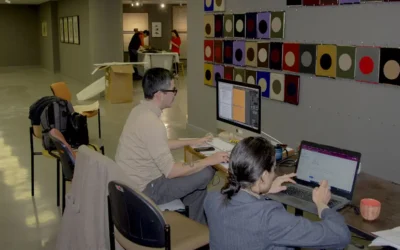How to Begin Your Search for the Right Museum CMS

Rachael Cristine Woody
How to Identify CMS Options for Consideration
Yes, we could just Google “Museum Collections Management Systems” and see what the search results say. Let me save you the time—the results are suspect at best. A Google search will only reveal the CMS vendors who have the best Search Engine Optimization (SEO), and not all of the results will be appropriate (or wise) to choose. Instead, here are four easy steps to quickly introduce staff to relevant CMS options:
- Ask a friend or respected colleague at a different museum what CMS they use and if they would recommend it.
- Visit peer museum websites to view what CMS they use. The CMS name can be branded on the page or listed as part of the website address. If it’s not immediately apparent then reach out the collections manager and ask.
- Review professional association pages to see if they provide a recommended vendor list or if they post CMS company advertisements.
- When attending conferences make a note of which CMS companies are in the exhibit hall, sponsored a meal, or published an advertisement in the conference program.
Initial CMS Selection Criteria to Consider
When selecting CMS options for initial review there are desirable CMS features and deal breakers to guide staff consideration. While the procurement committee will define a more thorough specification sheet for ultimate CMS decision-making, initial selection can be guided by the following features and deal breakers:
Features Required for CMS Consideration
- Control over private and public content
- Customizable front and back-end
- Cloud-based access
Deal Breakers to Remove a CMS from Consideration:
- No public online access
- No technical support
- No ability to customize catalog template, workflow, reports, or searches
Staff may find that not all of these features or deal breakers are relevant, but they do form a foundation from which staff can begin to define their own initial CMS parameters. If additional features or deal breakers are noted, but don’t fit within this first phase of the process, record them for the procurement team to consider later on when crafting CMS option specifications.
Identify and Communicate Basic CMS Information
As staff begin to accumulate CMS suggestions for further investigation, it’s worth documenting basic CMS information to share with relevant museum staff. Things that should be captured at this stage in the process include the following:
- CMS Option Name
- CMS Cost (if easily retrieved)
- CMS Option Website
- CMS Referral (colleague or museum that recommended it)
- Does the CMS option meet basic feature requirements (outlined above)?
- Is the CMS option free of deal breakers (outlined above)?
- Is the CMS option vendor owned? If so, by who?
- Is the CMS option free and/or open-source?
This information will help staff quickly review CMS option information.
Next Step: Form the Procurement Team
Any CMS acquisition will require the formation of a procurement team. Members of the procurement team will be staff who regularly use the CMS with (ideally) representation from all areas. It’s important to avoid “stacking”—meaning a majority of the procurement team is from one department, versus equal representation from each department. The procurement team’s job will be to identify CMS specifications, test and vet CMS options, and facilitate the purchasing process.
More information regarding the CMS procurement process will be shared in future posts.

Rachael Cristine Woody
Consultant, author, and blogger Rachael Cristine Woody advises on museum strategies, collections management and grant writing for a wide variety of clients. Learn about Lucidea’s Argus solution for museum collections management and digitization, which can be used to support internal stakeholders.
Similar Posts
How to Incorporate Interns in Museum CMS Projects: Data Creation
A museum expert details how interns can be successfully included in museum CMS projects at the data creation stage.
How to Incorporate Interns in Museum CMS Projects: Data Capture
A museum expert highlights how interns can be included in museum CMS projects at the data capture stage
How to Incorporate Interns in Museum CMS Projects
A museum expert highlights how interns can be included in museum CMS projects with three project ideas.
Create a Start-to-Finish Process for Cataloging Objects in the Museum CMS
A museum expert outlines the start-to-finish process for cataloging objects into a new museum CMS.
Hosting service
Enjoy all of the benefits of your Lucidea solution with secure, reliable, stress free hosting
Programs & incentives
No matter your size or budget, we’ve got you covered, today and tomorrow




Leave a Comment
Comments are reviewed and must adhere to our comments policy.
0 Comments